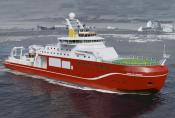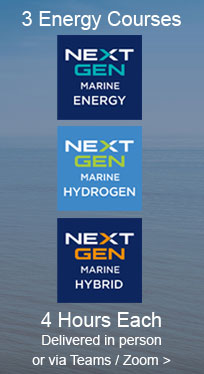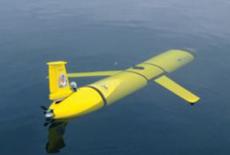Sir David Lays Keel for £200m Polar Vessel

21.10.2016

RSS Sir David Attenborough Keel Laid at Cammell Laird
Sir David Attenborough joined over 1000 people for the keel laying of the UK’s new £200 million polar research vessel when Cammell Laird shipyard held one of the biggest ceremonies in its illustrious history.
Keel-laying is a tradition that marks the start of a ship’s construction with a ceremony that is said to bring luck to the ship during construction and to the captain and crew during its later life.
Construction was officially started by the world-renowned naturalist and broadcaster, after whom the ship is named, at Cammell Laird’s famous Birkenhead site in Liverpool City Region. Sir David started the “keel laying” process by initiating the lifting by crane of the first hull unit on to the construction berth. This unit, weighing around 100 tonnes, includes part of the ship’s keel and is the first of 97 units which will be erected to form the entire hull of the research ship.
When the ship sets sail in 2019, the RRS Sir David Attenborough will provide a research base to help scientists tackle some of the most important issues facing humanity, including climate change, future sea level rise and the impact of environmental change on marine life.
Speaking at the ceremony Sir David Attenborough said, 'It is an honour to be invited to take part in the keel-laying ceremony. I have had several opportunities to experience the power of these places first hand. Scientists working on this new ship will inform everyone about our changing world for generations to come.'
Cammell Laird CEO John Syvret said, “It is a great honour to welcome Sir David and so many distinguished guests to Cammell Laird for this auspicious day. We are particularly proud that our entire workforce, management and staff were present to witness the milestone. This first section of hull represents the start of hull number 1390 at Cammell Laird, the latest in the sequence of vessels built by this yard from ocean liners to warships.
Commissioned by the Natural Environment Research Council (NERC), operated by British Antarctic Survey (BAS), the RRS Sir David Attenborough will transform the UK’s polar research capability. With state-of-the-art facilities on board, the new ship will enable more ambitious expeditions and deploy advanced marine robotics to explore inaccessible areas.
Universities and Science Minister Jo Johnson said, 'The 'RRS Sir David Attenborough', with 'Boaty McBoatface' operated from her as a robotic underwater vehicle, will be one of the most advanced research ships in the world. It will help inspire the next generation of scientists in the UK and build on our status as one of the world’s leading nations in polar science, engineering and technology.
Boaty McBoatface - The Legend Lives On!
Forget the EU referendum and BREXIT. In April 2016 the major test of modern democracy fell into the hands of the UK’s Natural Environment Research Council – over the naming of a boat. As the polls finally closed for the naming of its new polar research ship, the NERC confirmed that the votes were overwhelmingly in favour of ‘RRS Boaty McBoatface’...
The hugely popular name was proposed as part of the ‘Name our Ship’ campaign, in which members of the public were able to make suggestions. The 'Boaty McBoatface' suggestion, which sent the competition viral, received 124,109 votes. Four times more than 'RRS Poppy-Mai', named after a 16-month-old girl with incurable cancer, which came in second place. The chief executive of the NERC, Duncan Wingham, with whom the final decision lay, faced the dilemma of choosing between the credibility of his organisation – and the overwhelming burden of public opinion.
In May he was called before the House of Commons Science and Technology Committee, who wanted to discuss whether the public engagement project around the search for a name has been a 'triumph of public engagement or a PR disaster'.
The name Boaty McBoatface was first put forward by former BBC radio presenter James Hand who said, 'I made the suggestion but the storm that’s been created – it’s got legs of its own. I just feel it’s a very British thing.' After a few weeks of media speculation the 'RRS David Attenborough', which came in fifth with 10,284 votes overall, was finally announced as a suitable name for the research ship.
The Boaty sub-sea vehicle will be dispatched from RRS Sir David Attenborough to allow the ship's research crew to collect data and samples from the deepest waters of the Arctic and Antarctic. An alternative name of "Subby McSubface" is already being suggested on social media...
Southampton becomes the home of ‘Boaty McBoatface’
The name Boaty McBoatface has been given to a state-of-the-art yellow robot submarine, Autosub Long Range, based at Southampton’s National Oceanography Centre (NOC). The naming took place alongside the keel-laying ceremony of the UK’s new state-of-the-art polar research ship, RRS Sir David Attenborough.
Boaty McBoatface has been developed at the NOC and is able to travel thousands of kilometres on missions lasting several months at a time. The ability to travel under ice and reach depths of 6000 metres will enable Boaty to explore 95% of the ocean. Boaty and similar autonomous vehicles will help oceanographers investigate the processes driving change in the Polar Regions, including the extent of the ice melt, and conduct a range of research in the Arctic and Antarctic oceans without the need for the constant presence of a research ship. Scientists won’t need to wait to get access to the data, since Boaty will periodically surface and transmit the data back via a radio link.
Boaty and the other Autosub vehicles based at NOC are part of the UK National Marine Equipment Pool, and can be deployed from the RRS Sir David Attenborough to increase the quantity and quality of scientific data collected during offshore expeditions. This equipment pool is the largest of its kind in Europe, including ten thousand items with a collective value estimated at £20 Million.
Professor Russell Wynn, Chief Scientist of Marine Autonomous and Robotic Systems at the NOC, said, ‘NOC has a long history of innovation in marine robotics, and Boaty McBoatface is the latest addition to the Autosub family of robotic underwater vehicles developed here in Southampton. The Autosubs have a proven track record of pioneering science missions, including under ice and to the deepest parts of the ocean. The marine robot fleet at NOC is one of the most capable in the world, and by working with government and industry partners we are able to translate this capability into more cost-effective and environmentally-friendly marine observing, while also supporting regional and national growth in this rapidly growing sector.
A future aim for Boaty McBoatface will be to attempt the first-ever crossing of the Arctic Ocean under ice, which will provide a major technical challenge but has the potential to deliver a step-change in scientists’ ability to observe change in this vital region.
All images are copyright Hybrid Marine Power 2024 unless otherwise stated.
This does not exclude the owner's assertion of copyright over the material.
eNews
15.04.2024
MariNH3 Conference 2024
MariNH3 Conference 2024 is being held at Grand Plaza Hotel,…
eArticle
06.10.2023
Challenges of Unpredictable Marine Energy
From running Energy Transition training for significant maritime organisations technology…
Video
Round The World solar boat Turanor PlanetSolar
MS Tûranor PlanetSolar is the largest solar boat in the world. This 35 metre (115 feet) catamaran operates solely on…









